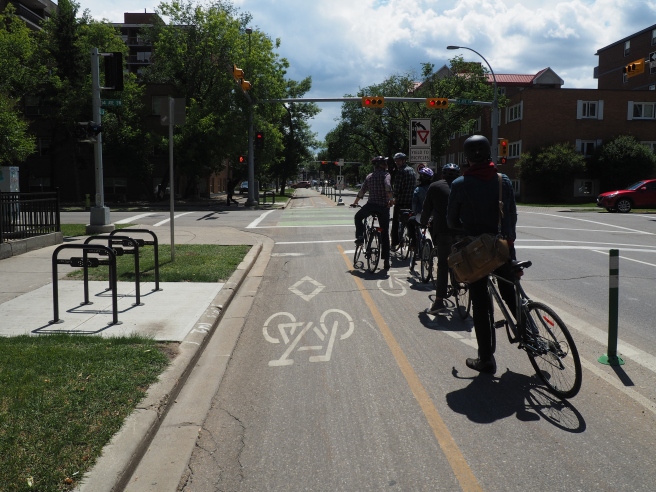Good read concerning the new cycle tracks
https://slowstreets.wordpress.com/2...al&utm_source=twitter.com&utm_campaign=buffer

https://slowstreets.wordpress.com/2...al&utm_source=twitter.com&utm_campaign=buffer


Come cheer on all the people on bikes crossing the bike counter as we hit the ONE MILLION mark on the Cycle Track Network. Bring your cowbells and noise makers and be part of this historic moment!
Get your bike portrait with People on Bikes YYC resident photographer, Masa Higuchi, who will be on hand snapping photos.
Meet the City of Calgary bike team and chat with them about the cycle track network.
FREE cookies for all!
WHEN: Wednesday, August 17 from 4:00-6:00 p.m.
WHERE: 5 Street & 9 Avenue S.W. by the bike counter beside the CPR underpass.
AFTERPARTY at 6PM at the Unicorn Super Pub on Stephen Ave.
Right now the cycle track ends abruptly where northbound and southbound Edmonton Trail lanes meet. They'll have to figure a way to get it to carry on, but this is a good start.Looks awesome and should really change the feel of Edmonton Trail. This is a big win for Bridge land. It's not clear how it connects to 8th Ave NE or various North routes, but there are a ton of low speed roads that cut through the nearby communities, so hopefully more cyclists give it a try.
While it certainly matters how our bike lanes connect when we have so few, Edmonton Trail is almost a success even if it is hardly used. The reason is because that section of Edmonton trail is about 2 lanes wider than it will ever need to be (4 lanes wide, but a 3 lane bottleneck to the south and a 2 lane bottle neck at the north). The cost of installation and disruption to traffic is almost negligible, and Bridgeland now has another transportation option for families, people who don't drive or can't afford cars, etc. I think Bridgeland, Renfrew, and Tuxedo Park with see a bit of densification in the coming decades.
We've all said it a million times, but what really would have helped accessibility in Bridgeland is if the George C King Bridge crossed Memorial.
Maybe we could get a simple painted lane down 1st Ave.





